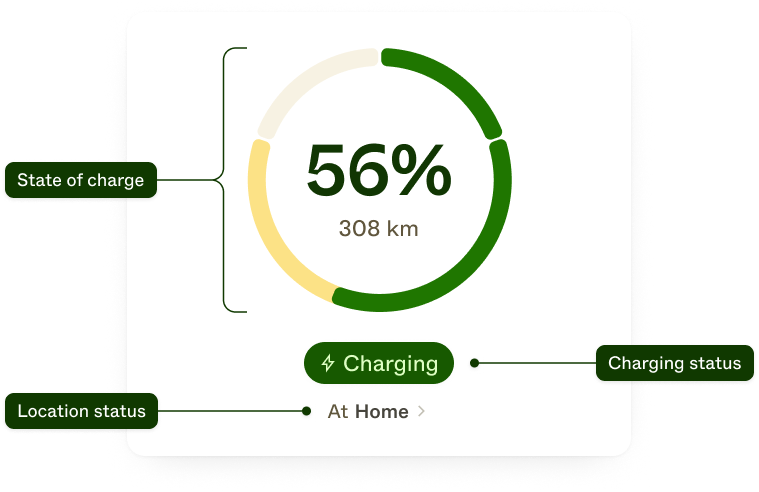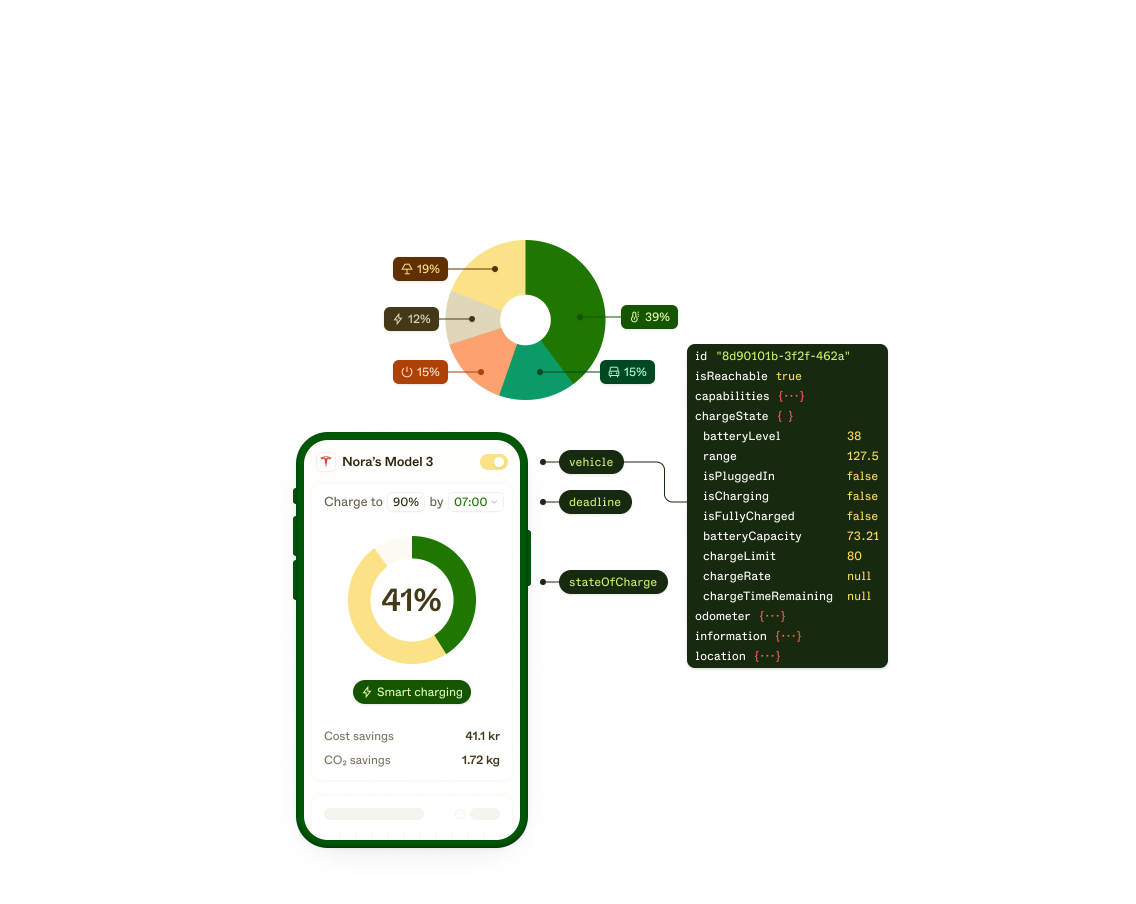The Ultimate Guide to Open Charge Point Protocol (OCPP)

Adoption of Electric Vehicles (EVs) is accelerating globally – and so too is the development of apps that help customers get more value from them.
One critical area where software innovators are trying to build better customer experiences and remove friction is EV charging. Whether at home, in public or for fleets, ensuring EV charging is accessible and optimized is top-of-mind for Product Managers.
In order to build apps that manage EV charging, Product Managers need four things: their customer’s EV, the EV charger, their frontend application, and something that provides connectivity and communication between the three.
Open Charge Point Protocol (OCPP) is one option. It enables the interoperability that Product Managers need in order to build EV charging experiences. In this blog, we’ll go through the basics of OCPP, so Product Managers can understand more about the technology, and whether it meets the needs of their EV charging experience. We’ll cover:
- What is OCPP?
- How does OCPP work?
- What are the benefits of using OCPP?
- What are the challenges of using OCPP?
- OCPP vs EV API
What is OCPP?
The Open Charge Point Protocol (OCPP) is an open-source communication protocol. It’s designed to enable communication between EV charging stations, and apps or control systems for managing EV charging.
OCPP enables interoperability between charging infrastructure and apps. It standardizes communication across diverse charging infrastructure provided by different manufacturers, so that Product Managers can offer consistent charging experiences in their app.
OCPP was originally developed in 2009 by the Open Charge Alliance. Since then, it’s gained significant traction in the EV industry, with many charging station manufacturers implementing OCPP in their products. Today, many EV management systems support OCPP, and its widespread adoption has led to a more standardized and interoperable EV charging ecosystem.
How does OCPP work?
OCPP operates on a client-server model, where the charging stations serve as clients and the central management system acts as the server. OCPP facilitates real-time data exchange, status monitoring, and control of charging sessions.
In short, this standardized communication means that charging stations from different vendors can be seamlessly integrated and managed within an EV charging app. There are are a few key features of OCPP that make it particularly valuable to Product Managers:
- Bi-directional Communication: OCPP allows for bidirectional communication between charging stations and the EV charging app. Not only can the app monitor and control the charging station, but the station can also send valuable data back to the app.
- Remote Management: With OCPP, Product Managers can remotely manage charging stations, making it easy to configure settings and troubleshoot issues, without the need for physical access.
- Data Exchange: OCPP enables the exchange of essential data like charging status, session information, and energy consumption, so Product Mangers can build experiences that optimize EV charging.
- Standardization: As an open-source protocol, OCPP promotes interoperability between different charging station manufacturers and apps, so Product Managers can build and scale consistent charging experiences.
What are the benefits of using OCPP?
OCPP solves a number of the challenges that Product managers typically face when building EV charging experiences.
The most significant benefit is interoperability. Without OCPP, Product Managers can find themselves limited by vendor lock-in. Proprietary protocols mean EV charging apps are tied to a single vendor for charging station hardware and software, and can’t easily scale their solution across multiple manufacturers. Because OCPP is open-source, Product Managers can easily integrate multiple charging infrastructure providers into a single, unified app. OCPP standardizes communication, ensuring that charging stations from different vendors can seamlessly communicate and be managed within the same system.
OCPP also enables real-time data exchange. Before OCPP, there was limited or no real-time data exchange between charging stations and apps. OCPP enables the exchange of critical data, such as charging status, energy consumption, and session information, empowering Product Managers with the insights needed to build better EV charging experiences.
Not only can Product Managers build better experiences, they can also scale them more easily. The exponential growth of electric vehicles means that scalability is a crucial challenge – and an enormous opportunity. OCPP allows for easy integration of new charging stations as the network expands, reducing the risk of vendor lock-in and the cost of building integrations with each manufacturer.
What are the challenges of using OCPP?
That said, OCPP is not a perfect (nor the only) solution when it comes to enabling interoperability between EV charging hardware and management systems.
One major challenge of using OCPP is that once chargeboxes are installed in the management system or app, it is difficult to change the owner and link them to different systems. This means the chargebox can only be connected to one app; changing the owner requires manual effort to input URLs and IP addresses. This can cause friction for residential customers who may want to connect chargeboxes to both an EV smart charging app and a wider home energy management app, for example. OCPP limits interoperability between chargeboxes and other distributed energy resources (DERs), which can be a blocker for Product Managers building experiences to help customers get a holistic view of their energy consumption.
Another challenge to bear in mind is that there are multiple different versions of OCPP. Product Managers need to understand the differences between versions and ensure compatibility with existing infrastructure to enable seamless functionality and future expansion.
OCPP vs EV API
For Product Managers seeking to connect chargeboxes to several different apps or management systems, using EV charger APIs like Enode’s is much easier. Enode’s API enables the same interoperability, data exchange and capability as OCPP, and offers a range of other benefits.
Firstly, the data format is standardized across brands. This is also the intention for OCPP, but implementation varies across manufacturers, creating a need for testing and modifying implementations across brands. This increases both the resources required and complexity involved.
Secondly, linking is notably easier for the end user. With the Enode Link UI a user only needs to sign in with their username and password from the OEM app, as opposed to changing the system settings for their charger - requiring interaction with custom URLs and IP addresses.
Lastly, updates and new versions are automatically accounted for. Product Managers would only have to relate to a general charger object that is uniform across brands with a continuously updated integration, rather than handling this complexity themselves.
How to connect EVs to EV apps
Both OCCP and EV APIs help Product Managers overcome the fragmentation, compatibility, and operational challenges in the EV charging space. They enable standardization and interoperability, making it easier for Product Managers to build and scale consistent EV charging experiences. As EVs become ever-more popular, and the EV infrastructure landscape continues to evolve, OCPP and EV APIs are critical tools that empower Product Managers to adapt and innovate quickly.
To learn more about how to build better EV charging experiences on top of Enode’s API, get in touch.
